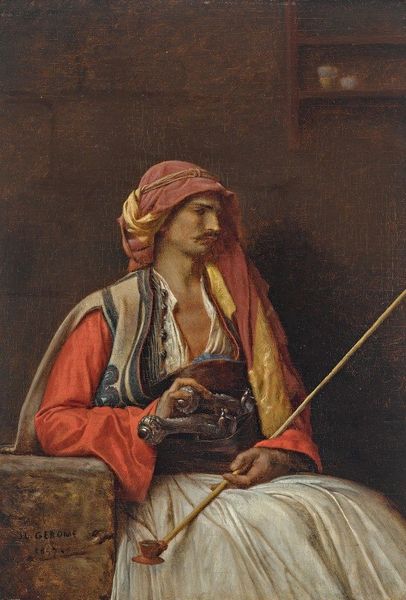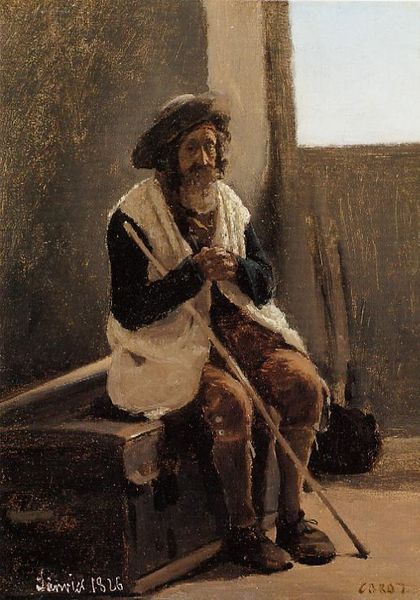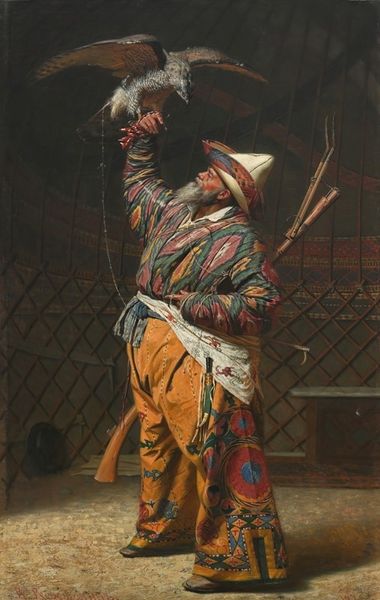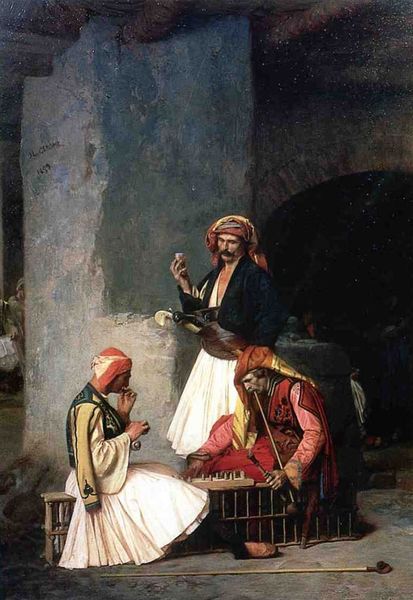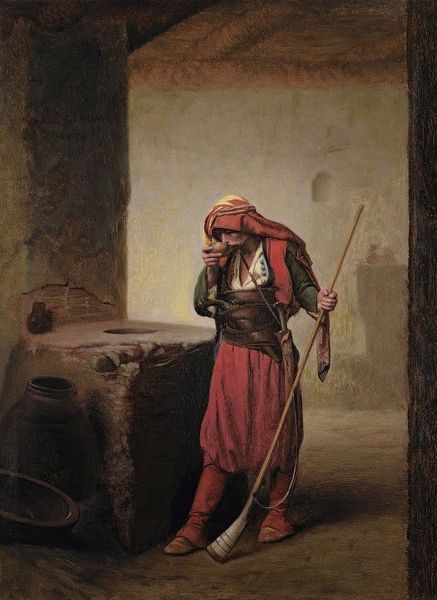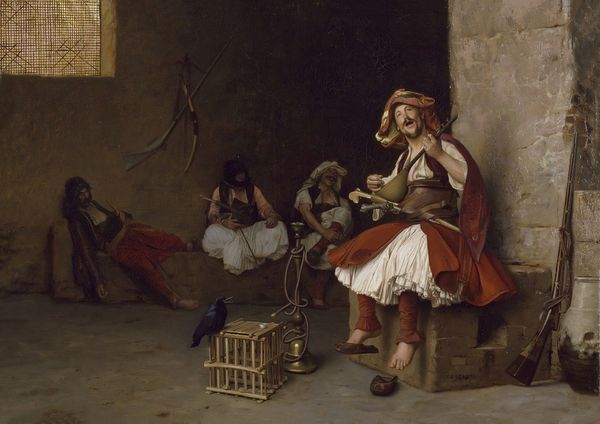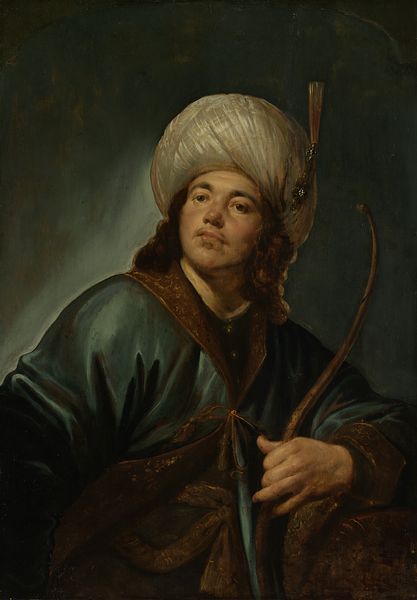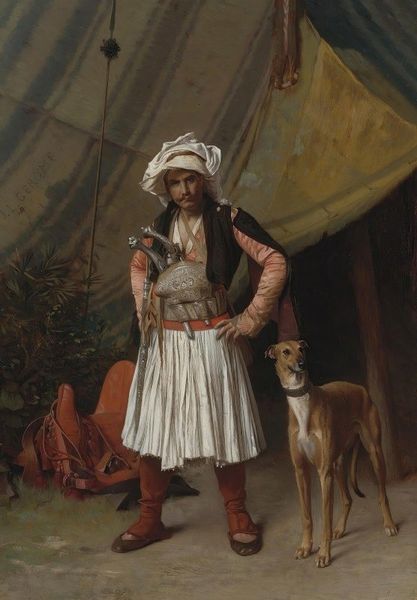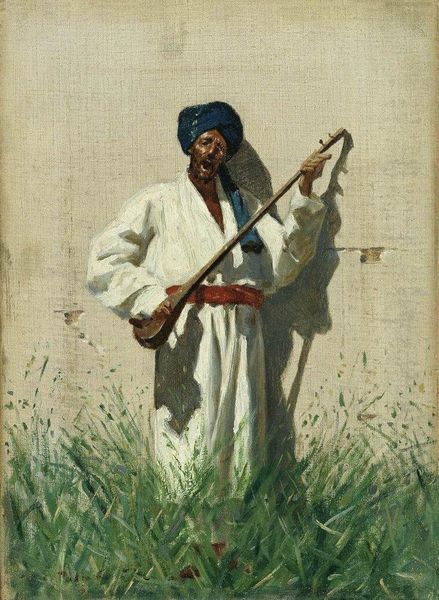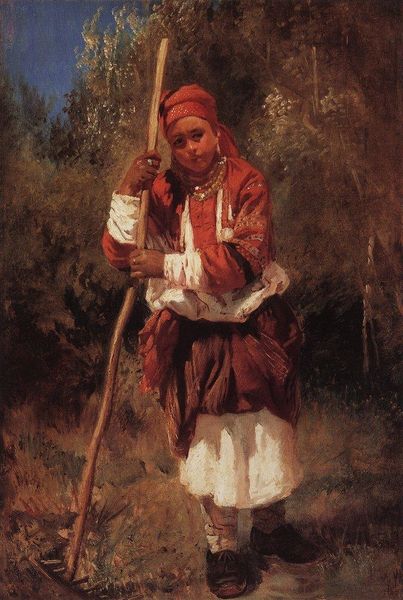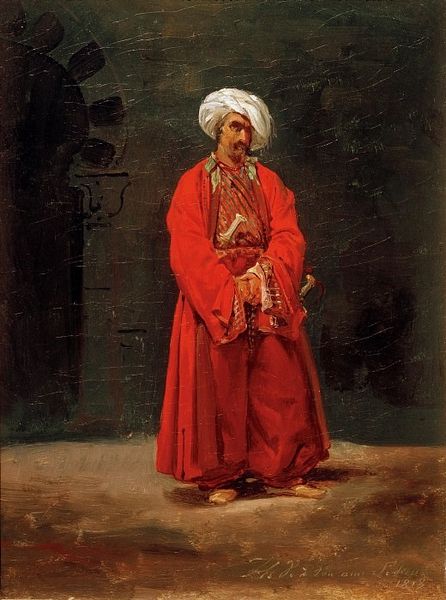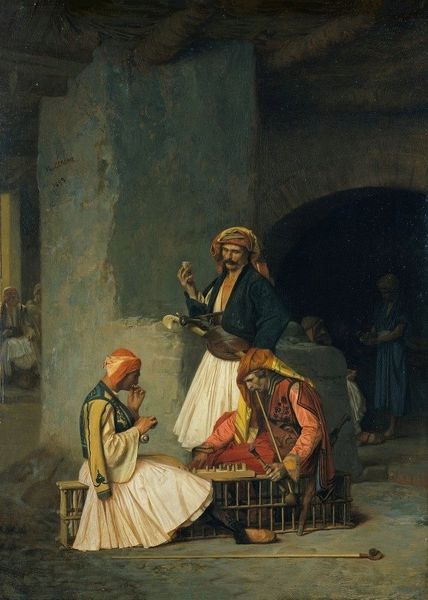
painting, oil-paint
#
portrait
#
painting
#
oil-paint
#
oil painting
#
orientalism
#
genre-painting
#
academic-art
#
portrait art
Copyright: Public domain
Curator: Here we have Jean-Léon Gérôme's "The Mandolin Player," an oil painting dating back to 1858. It immediately strikes me with its quiet, almost contemplative mood. What catches your eye? Editor: The hookah beside the figure seems strangely contemporary, while the firearm propped up on the wall reminds me that leisure is often predicated on violence or its potential. I can't ignore that these details—instruments of relaxation alongside a tool of domination—speak volumes about the depicted power dynamics. Curator: Absolutely. Gérôme’s process, working with oil paints, achieves a stunning level of detail, capturing the textures of the man’s clothing, turban, and even the rough stone of the wall he's seated upon. These choices serve to authenticate an imagined otherness. Editor: I'm immediately considering the historical context; we can't view this image outside of the Orientalist tradition. What does it mean for a French academic artist to portray a Middle Eastern man with his musical instrument? It speaks to the West's fascination with and simultaneous distancing from the 'exotic.' Curator: Precisely. Considering the production, there's a performative aspect. It seems the artist focused his resources to render these exoticized scenes into reality through material means: purchasing props, hiring models, and applying learned techniques. Editor: Gérôme and his contemporaries significantly shaped the European imagination of the Middle East, informing both popular culture and colonial policies. Where can we see beyond Gérôme’s individual artistic ability and academic adherence? I think this artwork gives us access to Western social imagination in the mid-19th century, one of power dynamics and imbalanced representation. Curator: In summary, the details, from the cut of the stone block to the elaborate headdress, tell us a story about access, artistic intention, and Western projections and expectations. Editor: Ultimately, a reflection of the artist and their place in a world where 'the other' could be consumed as both an object of artistic endeavor and a projection of fantasies.
Comments
No comments
Be the first to comment and join the conversation on the ultimate creative platform.
